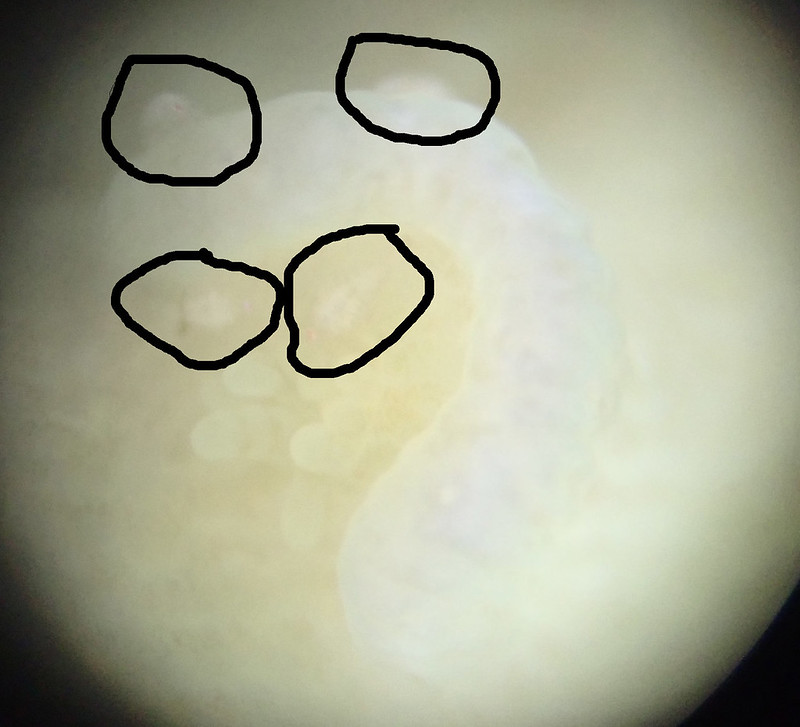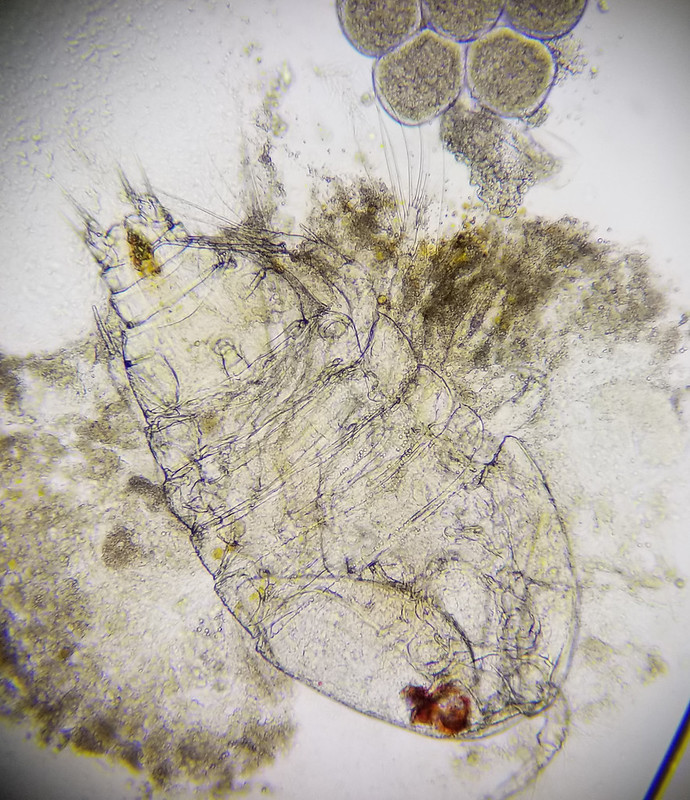
 |
|
|
|
#1
|
|||||
|
|||||
 copepod3 by Glenn Murray copepod3 by Glenn MurrayThis is a view of 4 of them seen at 60 time magnification on the dissecting scope. They seem to hang out on the polyps and inside the corallites. There is hundreds of these guys on a small 2" frag. |
|
#2
|
|||||
|
|||||
 copepod 2 by Glenn Murray copepod 2 by Glenn MurrayThe red dot is the front of this guy. This is a top down view at 800 times magnification. |
|
#3
|
|||||
|
|||||
|
To date I have used 2 treatments of interceptor at 100%. I did the 3rd treatment at 160%. I just treated today, 4th treatment at 240% of the recommended dosage. From what I can see I can go up to 400%.
So far the treatments only seemed to reduce the population of these copepods. It has slightly affected the amphipod population and does not appear to have had a major impact on my snails. Fish and corals show no sign of stress. Will keep you posted. Like I said before I have received acro cuttings from many different reefers locally. I noticed it on the last couple of frags I bought which have been treated with bayer and are in the frag tank. Those frags have not set foot in my display tank. The little buggers that I have in the display tank I must have gotten earlier. Every cutting I have has been dipped in Coral RX. Coral RX does not in phase these guys. They are just a tiny little dot with a hand lens and are really not visible. I did not start finding these guys until I was looking at them under the microscope. |
|
#4
|
|||||
|
|||||
|
Ugh ... thanks for all the information on this. It’s crazy how many things attach to corals which are hard to see with the naked eye. I am fascinated with the under microscope photos of these little pests. Have you figured out if they are eating the acros skin? Or just irrating the polyps? Also you may have answered earlier, but are they taking to any other corals or just acros?
__________________
300g Basement Reef - April 2018 |
|
#5
|
|||||
|
|||||
|
Quote:
I have no idea what they are doing but they are definitely aggravating the corals and the polyps are not fully extending. In each of the corallites there are several of these guys Last edited by Frogger; 03-17-2019 at 02:44 AM. |
|
#6
|
|||||
|
|||||
|
My god! These little buggers are definitely a handful. That’s the thing with the tiny size, lots of people probably have them but don’t have the skill to detect. Following along on the treatment trials. Keep up the good work as sharing is caring.
__________________
300g Basement Reef - April 2018 |
|
#7
|
|||||
|
|||||
|
Quote:
I was not aware of it before so I can not say who I got it from and if any corals are actually clean. I had spent most of my time doing careful inspections with my microscope for AEFW and I have seen those often as well. Coral RX works on flatworm, at least dislodges it from the coral, although every time I have found it I have returned the corals to the vendor/reefer but Coral RX has no affect on black bugs. Most of the corals in my tank are not negatively affected as their growth is good, colours could be a bit better (nit picky). However those that have been affected are not doing great, growth has been reduced, colours are not good and polyps are not fully extended. I cannot say that any corals have died from this but I would not know as I wasn't checking for it over 2 months ago. Yesterdays treatment: I checked last night before going to bed and there were still quite a few on the orange passion, the amphripods on the rocks did not appear to be affected. I just checked the orange passion and I can't see any black bugs on the coral (just looking through the glass with a 10x optivisor. But it is day time and they are not usually that active during the day. In the past I have always been able to see them during the day, so I am cautiously optimistic but it is way to early to say. If it hasn't killed them all but reduced the numbers this is good because it means I am getting close to the correct dose. Last edited by Frogger; 03-17-2019 at 11:22 PM. |